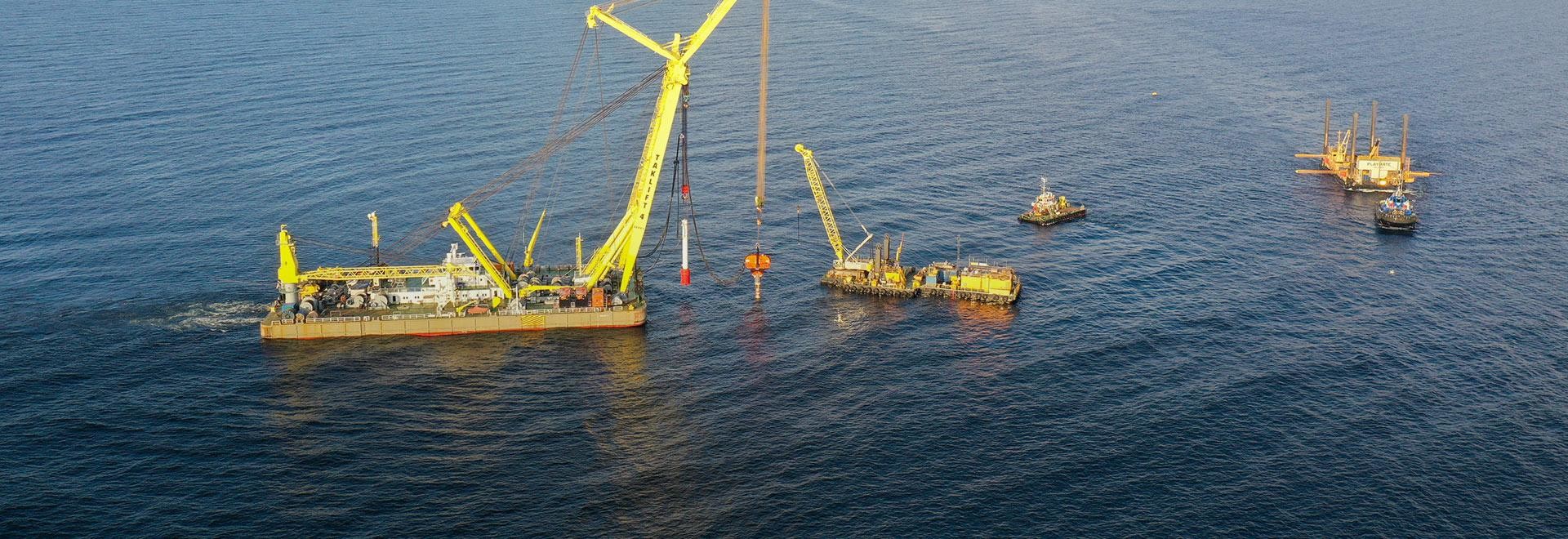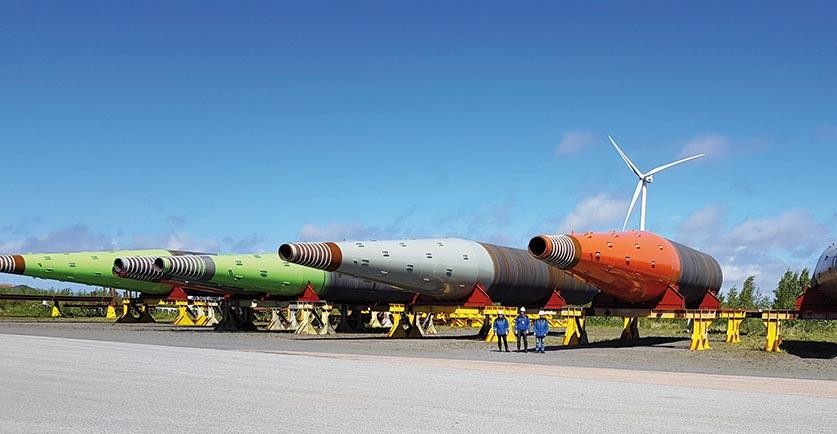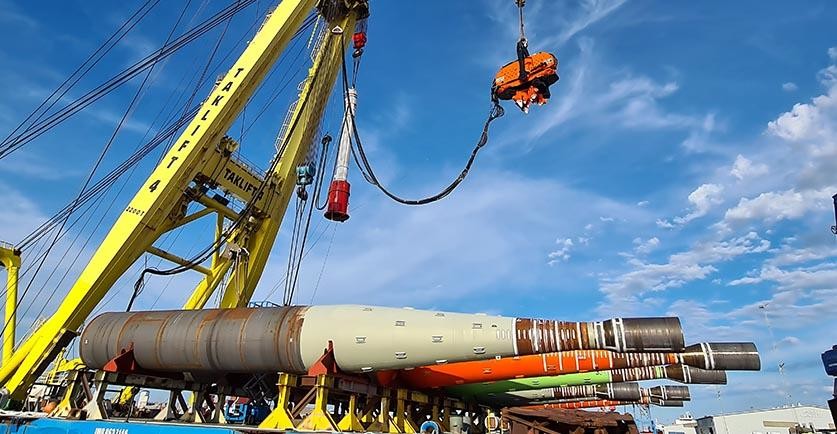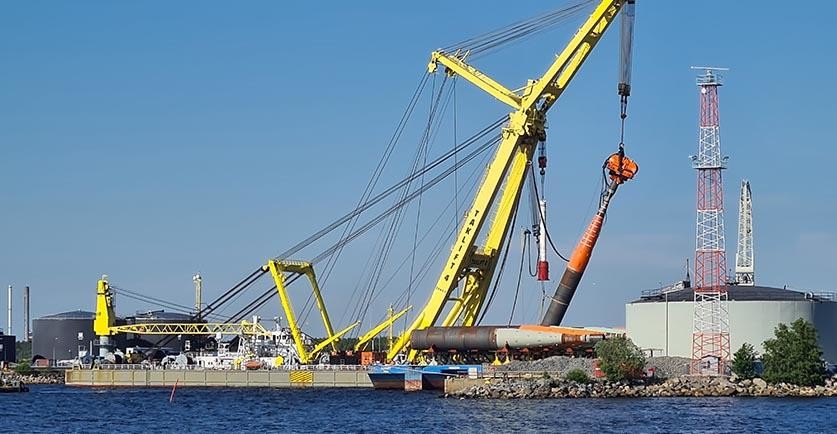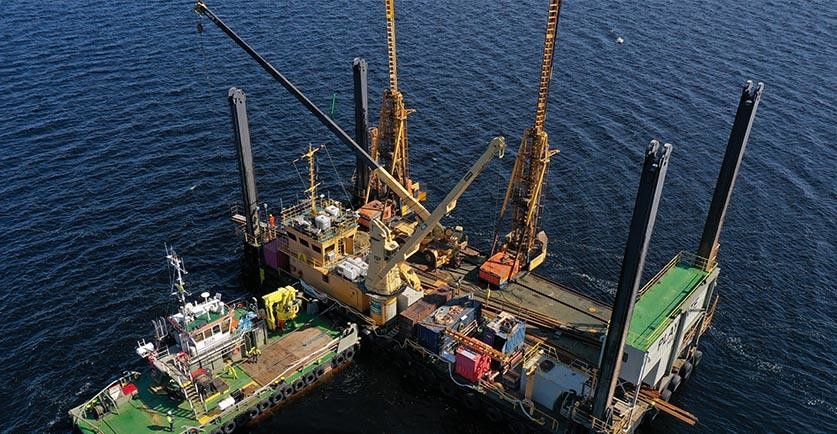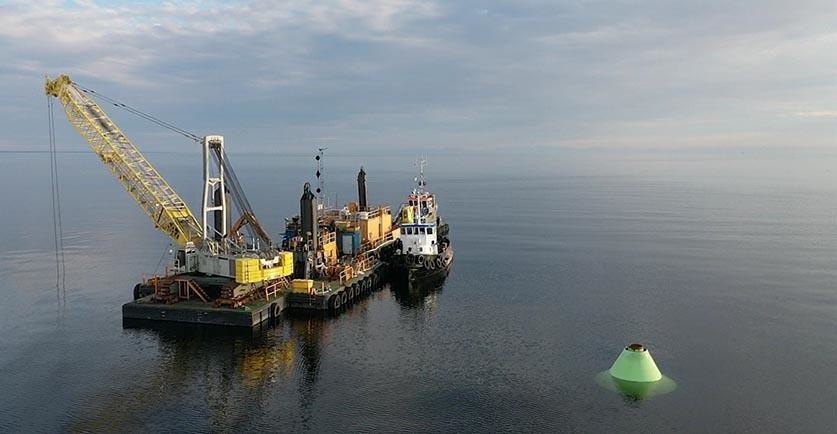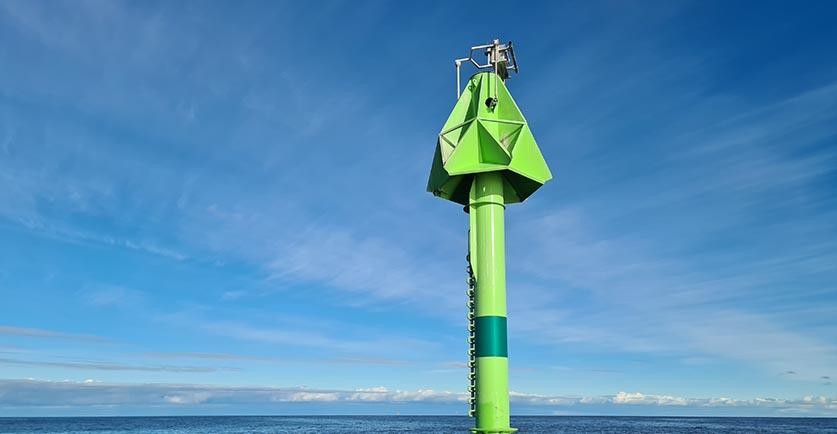Oulu region sought to meet the demand for increased vessels sizes by taking into use a new, deeper fairway. Terramare implemented the installation of eight fixed sea marks in the new fairway. The fixed sea marks allow the fairway to be used all year round, with no need for the installation of temporary sea marks.
The maritime fairway, completed in 2018, is around 90 kilometres long and has a navigation depth of 12.5 metres. The fairway mainly follows a natural depth course.
Project Manager Sami Soikkeli says that the new sea marks were installed in the open sea at a distance of 38–64 kilometres from the Port of Oulu. The work began in May 2020.
“At the location of the marks, the sea depth varied from 9 to 18 metres. Working on the open sea is challenging at such locations, where the conditions are unpredictable.”
In the case of three sea mark foundations, the contract involved mass transfer, in which around 16,000 m3 of soft sediment was dredged.
“This was replaced by around 50,000 m3 of blasted rock, which was deep compacted in layers,” adds Soikkeli. The material were transported by the loading barges Terra 1 and Terra 2.
Dutch assistance proved its worth
Softening drilling and blasting were carried out just before the start of piling in order to break up boulders and soften the bottom material.
“The blasting at the sea mark locations broke the rocks and softened the sea bottom moraine,” explains Soikkeli.
The installed piles are 28-41 metres long and weigh 91-207 tonnes. The piling was done with the floating crane Taklift 4, which arrived from the Netherlands on special assignment.
“For the piling, we had developed a new working method that enabled the installation of a large pile using only one crane,” says Soikkeli. After piling, the piles were filled with sand and the rest of the installation work was completed.
Finishing work included installing ice cones, concreting the top sections of the piles and the ice cones, and installing the top sections on the end of the piles.
The octet of sea marks was handed over to the Transport Infrastructure Agency in October 2020.

